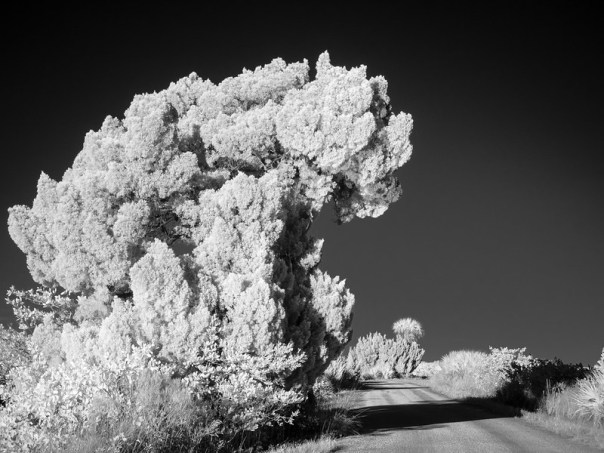Here’s another photo from my last trip to Viera Wetlands.

Let’s go fishing! Two fishermen head out before dawn.
I’ve made this kind of photo before – you can see some examples in this set on Flickr. I think this one turned out better than my earlier tries. I used a different approach and because it’s been a while since I’ve written a “behind the scenes / how-to post”, I thought I’d fill you in on how I made this.
The boat ramp at this little park where SR 520 crosses the St. Johns River is pretty busy around dawn. It seems to be a popular place for fishermen to put in. I waited several times while they cleared my frame and the water calmed down before I could make my next exposure. So I decided to make an image that included a boat.
It’s a challenging shot. I wanted to capture the intense sunrise colors so I had to be careful not to over expose and blow out the sky. I also wanted some detail in the boat, so I needed to over expose there a bit, but still minimize motion blur. At sunrise, I normally use a low ISO for the best quality image, and a small aperture for good depth of field. This results in a long shutter speed, which is bad for photographing moving boats. And if I want to bracket and use multiple frame HDR to capture the huge contrast range in the scene – that’s even worse for moving boat photography. So how did I make this image? Glad you asked!
The secret is to carefully capture two frames and blend them together by hand. The first frame is exposed for the boat: I used a high ISO and a wide open aperture to get my shutter speed as fast as possible, and I overexposed slightly to capture a little shadow detail in the boat and in the vegetation on the shore. With my camera set and on a tripod, I composed and waited for the next boat to get to the right point in the frame. Here’s that RAW file:

The second frame was my main exposure and I wanted it to be the best quality possible. I also wanted to slightly under expose to capture color and detail in the sky. I waited until the boat was gone and the water was calm again and then made this exposure:

When I got home, I preprocessed the two raw files using identical color balance and paying careful attention to noise reduction (especially on the higher ISO frame with the boat). I’ve used DxO Optics Pro lately when I want the best RAW conversion. It does a wonderful job on both lens corrections and noise reduction for supported equipment. After a few tweaks to exposure in each file, I brought them into Photoshop on separate layers.
The next thing to deal with was the boat. Even though I’d pushed my shutter speed as high as I thought I could, 1/20 second still left a little motion blur visible. The “Filters / Sharpen / Smart Sharpen” command in Photoshop has a “Remove Motion Blur” option and I’ve found that it works well in situations like this where the direction of motion is known. I used it selectively on a duplicate layer to enhance detail in the boat. Here are before and after crops at 200%. I think it’s a nice improvement:


Next I used layer masks to blend the multiple frames together. I worked carefully around the boat and painted it into the main / second frame. I like a little detail in my shadows instead of a straight silhouette. Since I’d slightly overexposed the first frame (and was careful with noise reduction) I painted some of that into the vegetation. Here’s the first merged result:

The only filter I used on this was Topaz Clarity – I like the way it increases mid-tone contrast without adding halos.

After selective sharpening on a separate layer, I returned to Lightroom for final adjustments (black and white points, vignette, etc) to get the first image in this post.
I struggled some with the cropping. I tried a 16×9 aspect ratio, but because I wanted to keep all the sky, I thought the horizon ended up too close to the center. I decided to keep the original composition since the dark water at the bottom holds my eye in the frame. I might play with it some more.
I like how it turned out and I hope you do too. I also hope the info helps with your photography. If you have any questions on details or other photography related things, let me know in the comments.
Thanks for stopping by and reading my blog. Now, go make some photos!
©2014, Ed Rosack. All rights reserved.




























